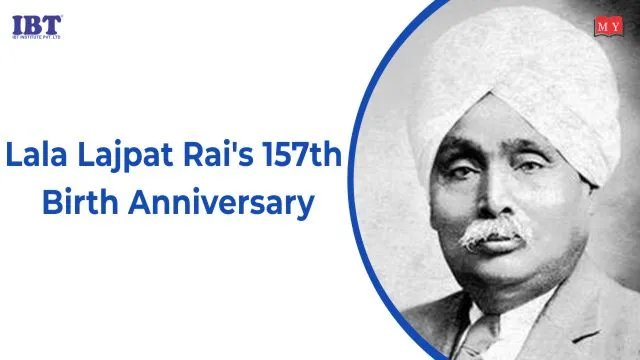
Lala Lajpat Rai's 157th Birth Anniversary
Lala Lajpat Rai (28 January 1865 – 17 November 1928) was one of India’s most celebrated freedom fighters. His ideology of nationalism and zealous patriotism earned him the title, ‘Punjab Kesari’ and ‘Lion of Punjab’. He was part of the famous radical trio Lal Bal Pal,who advocated the Swadeshi movement in India, involving the boycott of all imported goods and the use of Indian made goods. Rai also initiated the foundation of Punjab National Bank. In 1897, he founded the Hindu Orphan Relief Movement to keep the Christian missions from securing custody of these children. A prolific writer, leader, politician and activist, Rai died from a heart attack after not recovering from injuries received during a police lathi-charge, while protesting the arrival of Simon Commission. On the occasion of the 157th birth anniversary of Lala Lajpat Rai, we look back upon the struggles faced by him and all that he accomplished in his life.
Rai was born on 28 January 1865 in Dhudike, Punjab to a Jain family. His parents were Munshi Radha Krishan Agarwal and Gulab Devi Agarwal. His father was a government school teacher at an Urdu and Persian school. He did his primary schooling in Rewari, Punjab. Rai’s liberal views and Hindu beliefs were shaped by his father and deeply religious mother respectively, which he then used to reform Indian policy and religion through politics and journalistic writing. In 1880, Rai joined the Government College at Lahore to major in law, where he was influenced by the Hindu reformist movement of Swami Dayanand Saraswati, and became a member of the existing Arya Samaj Lahore (founded 1877) and founder-editor of Lahore-based Arya Gazette.
In 1886 Rai moved to practise law in Hisar where he became a founding member of the Bar council of Hisar along with Babu Churamani. In the same year, Rai also founded the Hisar district branch of the Indian National Congress with Babu Churamani, three Tayal brothers (Chandu Lal Tayal, Hari Lal Tayal, and Balmokand Tayal), Arya Samaj Pandit Murari Lal, Seth Chhaju Ram Jat, and Dev Raj Sandhir. He also practiced journalism and was a regular contributor to several newspapers. In 1886, he helped Mahatma Hansraj establish the nationalistic Dayananda Anglo-Vedic School, Lahore which was converted to Islamia College (Lahore) after the partition in 1947. Soon, he joined ranks with Bipin Chandra Pal and Aurobindo Ghosh from Bengal, and Bal Gangadhar Tilak from Maharashtra to call for ‘Purna Swaraj’.
In 1917, Rai moved to the United States during the First World War and founded the Indian Home Rule League of America in New York. He stayed in the United States from 1917 to 1920. Rai returned to India in 1920 and in the following year led the special session of the Indian Congress Party that launched the non-co-operation movement. He was imprisoned from 1921 to 1923 and elected to the legislative assembly on his release. In 1928, the Simon Commission was set up in India to report the political situation in India, the commission was met with nationwide protest and unrest since it did not include a single Indian in its membership. In the same year, Rai introduced the legislative assembly resolution for the boycott of the British Simon Commission and led a non-violent march in protest against it. The protesters chanted “Simon go back” and carried black flags. It was during this protest that the police lathi charge occurred against the protestors. Rai was personally assaulted and extremely injured, he subsequently addressed the crowd with his now-famous words and said, “I declare that the blows struck at me today will be the last nails in the coffin of British rule in India”. Lala Lajpat Rai left behind a legacy of nationalism, unity, and strength. He was a firm believer in India’s independence and dedicated his whole life to the cause.
 4.5/5
4.5/5








